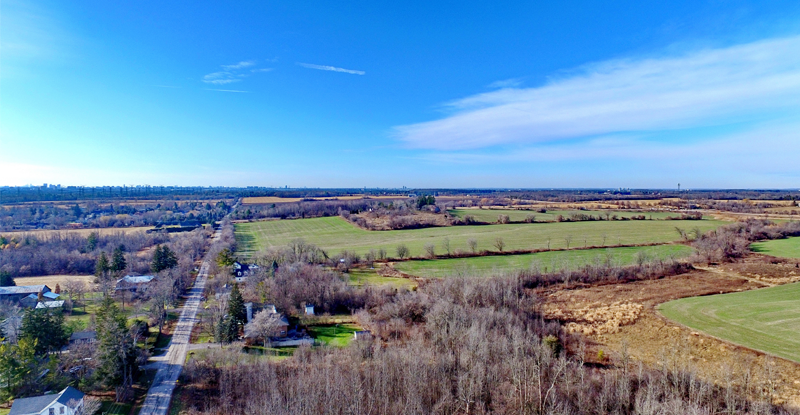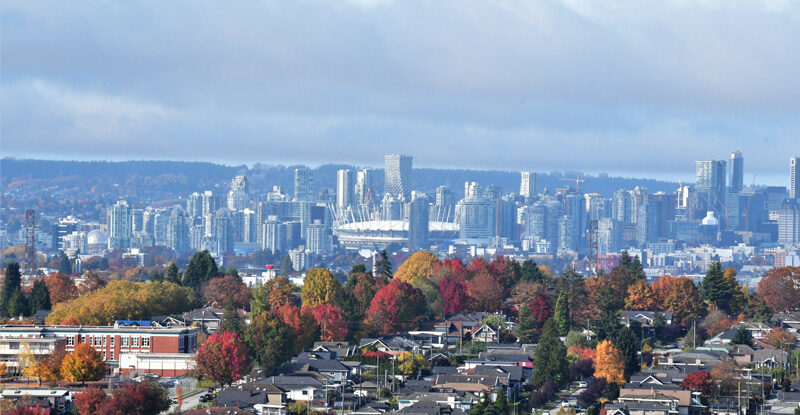Ontario eyes Greenbelt development

Ever-growing urban sprawl has long been a problem in many North American cities, but some municipal governments have recently taken action to develop without expanding into green areas. That includes the City of Hamilton, ON.
City staff in Hamilton recommended expanding the city boundaries to allow for development on surrounding farmland. They proposed that 13 square kilometres of farmland be used for new construction. However, almost the entire city council voted against the proposal. Instead, they wanted 81 percent of developments to be built within already urbanized areas.
Hamilton’s decision to block development on farmland came after a year-long public consultation process. Surveys were sent to residents and around 18,000 responses were received. Around 90 percent were against expanding the city boundaries. But in November last year, the Ford government compelled Hamilton to expand its urban boundary and build on the farmland.
The move is part of the provincial government’s plan to build more housing.
A Plan to Build More Housing
On Nov. 29, the Ontario government passed Bill 23, More Homes Built Faster Act, 2022. The Act sets housing goals for 29 larger cities in the province. It also allows for the construction of up to three units on a single-residential lot without municipal permissions. In addition, the plan allows for construction in parts of Ontario’s Greenbelt.
Previously, Premier Doug Ford reversed plans to build on the Greenbelt. “The people have spoken. I’m going to listen to them. They don’t want me to touch the Greenbelt, we won’t touch the Greenbelt,” he said during the 2018 provincial election. But by November 2022, it looked like the premier has reversed on that reversal.
The provincial government proposed removing land from the Greenbelt to make room for at least 50,000 new homes. The proposals remove around 7,000 hectares in 15 areas of the Greenbelt. But the Ford government’s plan now faces investigations and strong opposition.
In January, the Ontario integrity commissioner and the auditor general opened investigations into the Greenbelt plan. The integrity commissioner is investigating whether the provincial government tipped off developers ahead of announcing its plans for the Greenbelt.
In February, the Ontario NDP submitted “additional evidence” the party alleges shows that the Ford government tipped off developers. The government says that any construction on Greenbelt land would need to begin no later than 2025. “If these conditions are not met, the government will return these properties to the Greenbelt,” officials said in a news release.
“What it amounts to is a direct attack on the territory and integrity of the Greenbelt. If this continues … it will begin the unraveling of the Greenbelt,” said Former Toronto mayor David Crombie in an interview with the CBC. Crombie has also the chair of the provincial Greenbelt Council.
Conservation versus Urban Sprawl
Environmental Defense, a Canadian environmental advocacy organization, said the Act would “enable wholesale destruction of wetland habitats and conservation lands – and expose us all to an escalating risk of floods and other disasters.”
Indigenous groups have also voiced opposition to the plan. In a public letter, published on Dec. 12, 2022, the Mississaugas of the Credit First Nation (MCFN) called on the Ford government to repeal the Act. The First Nation said the Act would have “adverse impacts on our Treaty rights, Land Claims, as well as archeology in the MCFN traditional and Treaty Territory.” MCFN also said that the provincial government had abrogated its responsibility to consult with Indigenous Peoples.
Ontario’s Greenbelt is the world’s largest permanently protected green space. Its 7,200 square kilometres stretch from Lake Simcoe, around Lake Ontario, and down to the Niagara Region.
A statement signed by more than 125 organizations said the plans will “supercharge expensive and wasteful urban sprawl.” Critics also pointed out that the proposals will not help solve the affordability crisis.
“Renters will have fewer protections. And people who are looking for housing they can afford in neighbourhoods they want to live in won’t be any better off because of these proposed actions,” said Geordie Dent, executive director of the Federation of Metro Tenants’ Association.
The provincial government held a public consultation between Nov. 4 and Dec. 4, 2022. Almost 30,000 comments were received. The province stated that there was “strong support for continued Greenbelt protections” and “broad opposition” to removing or redesignating any lands under the Greenbelt plan. Despite the opposition, the Ontario government is still determined to go ahead with the plan.
Ontario’s Minister of Housing and Municipal Affairs, Steve Clark, said he hoped the Act would get shovels in the ground faster. “We have a big problem. It’s a crisis and we need all three levels of government doing their part,” he said after the bill was passed. MW
✯ Municipal World Insider and Executive Members: You might also be interested in Chris Wiebe’s article: Heritage versus more housing: Unpacking a false opposition.
Ibrahim Daair is Staff Writer and Copy Editor at Municipal World.
Related resource materials:



